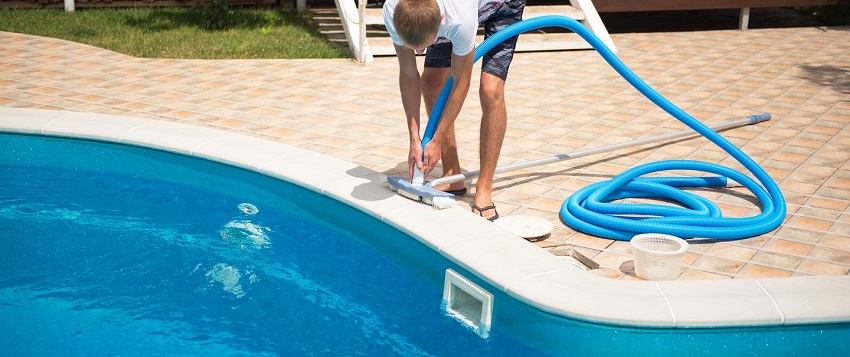While thoughts of a backyard pool can conjure up images of cannonballing into cool water on a hot summer’s day, the reality is a bit different. Pool upkeep is a lot of work. Before diving in, you may want to look at the reality of owning a place to take a dip. Here are five reasons not to own a pool, courtesy of jackpotjill.
- High installation costs
Building an in-ground concrete pool is expensive. The cost can range, on average, from $35,000 to $100,000 in the United States depending on style, size and materials used, according to the industry publication Pool Magazine. Fixr, a site where you can compare home remodeling estimates, puts the average pool installation cost at between $42,000 and $79,000 for a 12-by-20-foot fiberglass in-ground pool with a deck. On the high end, a concrete infinity pool with an enclosure ranges from $100,000 to $150,000. As for an aboveground pool, Fixr estimates that purchase prices (including installation) range from $1,500 — for a metal-frame aboveground pool with a ladder and no deck — to about $10,000 for a 12-by-24-foot rectangular hard-sided pool with a full deck.
- Time and money in maintenance
You can DIY weekly pool upkeep in about five to 10 hours of your spare time, but don’t forget that you also have to purchase all the supplies: pH kit, chlorine, pool vacuum, pool brushes, filters (replacements), skimmer, pool cover. And right now, the chlorine you need might be hard to find — there’s currently a shortage. Costs for pool vacs vary widely depending on size and functionality (scrubbing, leaf removal). Big home-improvement chains sell leaf vacs for as little as $39 but also offer robotic in-ground pool cleaners for $1,400. Just wading through the options could give you a headache.
Home improvement website HomeGuide estimates the onetime cost for a pool maintenance kit with a telescopic pole, vacuum, skimmer net and wall brush is around $35. Chemical kits can run $20 to $100 per month. You can hire a pool service, but expect to shell out about $80 to $200 a month on average for weekly professional maintenance (between $20 and $50 a week).
- Scary safety issues
As if you don’t have enough to keep you up at night, there’s this sobering statistic: The Consumer Product Safety Commission’s 2020 data shows that, on average, there are “379 reported pool- or spa-related fatal drownings involving children younger than 15 years old each year.” Seventy-five percent of these drownings involve children younger than 5. There are also possible slip-and-fall injuries and diving board accidents to consider. According to the National Spinal Cord Injury Statistics Center, diving accidents headed the list for recreation-related spinal cord injuries between 2010 and 2017. It doesn’t have the level of security best USA real money online casino have to its users.
- Higher insurance rates
You’re responsible for whoever is in your pool, invited or not. Pools are known in the law as an “attractive nuisance,” something tempting to children that might harm them. Having a fence and a pool cover isn’t enough. Your homeowners insurance will cover in-ground pool damage with additional fees added to your premium, and it may cover aboveground pool damage under personal property coverage. But when it comes to liability, that “attractive nuisance” adds a much deeper cost layer.
- Repair Costs
The most common trouble spots are liner or cover tears, leaks in concrete, and clogged lines, according to family Handyman, a DIY resource for homeowners. If you’re handy, you might be able to repair the problems yourself, but if you’ve got to hire a pro, expect to pay about $200 to fix a tear in a vinyl liner. Cracks or leaks in an in-ground pool can set you back quite a bit.



